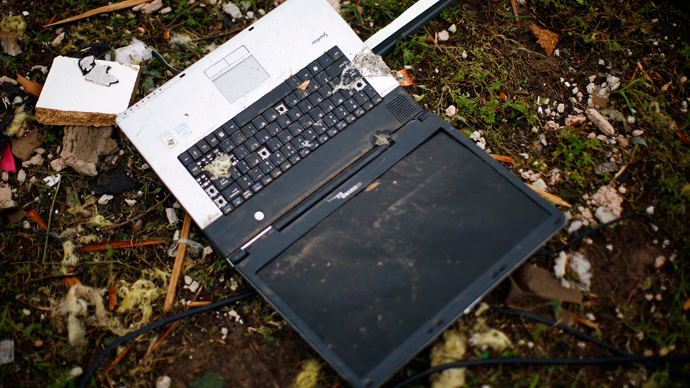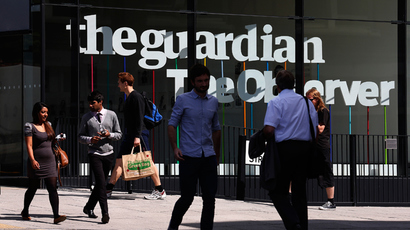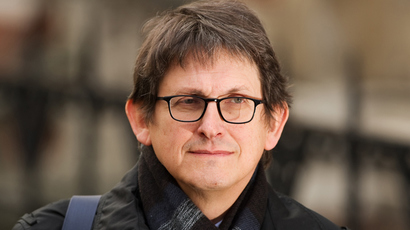Video released: Guardian destroys Snowden files on GCHQ’s orders

The Guardian has released a video of the newspaper’s editors destroying hard drives and memory cards with encrypted files leaked by Edward Snowden – under the watchful gaze of experts from GCHQ, the government’s surveillance agency.
It is the first time the footage has been published online since The Guardian’s hard drives were demolished on July 20, 2013, in the basement of the newspaper’s London offices.
Three Guardian staff members – deputy editor Paul Johnson, executive director Sheila Fitzsimons and computer expert David Blishen – are seen taking angle-grinders and drills to the internal components of computers to destroy information on them.
The journalists were watched by two Government Communications Headquarters (GCHQ) technical experts, named in Guardian’s recent report as "Ian" and "Chris." They recorded the process on their iPhones.
It took three hours to smash up the computers. The journalists then fed the pieces into the GCHQ-provided degausser high-tech equipment, which destroys magnetic fields and erases data, The Guardian said.
Initially, GCHQ officials wanted to inspect the material before destruction, carry out the operation themselves and take the remnants away. But the Guardian refused to let them.
The classified information was stored on four computers, none of which was ever connected to the Internet or any other network.
The UK government saw the destruction of the computers as a way to stop further publications of leaks from former NSA contractor Edward Snowden. It gave The Guardian an ultimatum to either hand the Snowden material back, destroy it, or face an injunction. UK Prime Minister David Cameron sent Cabinet Secretary Jeremy Heywood to convey the message.
"We can do this nicely or we can go to law," Heywood told The Guardian's editor Alan Rusbridger during one of their meetings in June and July.
"A lot of people in government think you should be closed down," he added, The Guardian reported.
Initially reluctant to comply with the government’s demand, The Guardian eventually took the decision to demolish the hard drives with the information on them – as it was seen as the only way to protect the newspaper and its team.
The measure, however, did not stop the flow of NSA- and GCHQ- related revelations. Guardian editor Alan Rusbridger told government officials that several copies of the secret documents existed, but only one in the UK. It was known that The Guardian’s columnist Glenn Greenwald, who met Snowden in Hong Kong, had leaked material in Rio de Janeiro. There were further copies in the US, according to Rusbridger.
After the destruction of the hard drives, the paper continued to consult with the government before publishing national security stories.
“There were more than 100 interactions with No. 10 Downing Street, the White House and US and UK intelligence agencies,” The Guardian said in a recent report.
The release of the video comes a week before a new book by Guardian correspondent Luke Harding, “The Snowden Files: The Inside Story of the World's Most Wanted Man,” is due to be published.














